Koryo Books: Where K-Pop Fans and Book Lovers Converge in NYC
Established over 40 years ago, this Koreatown store has evolved from a community bookshop into a global cultural destination!


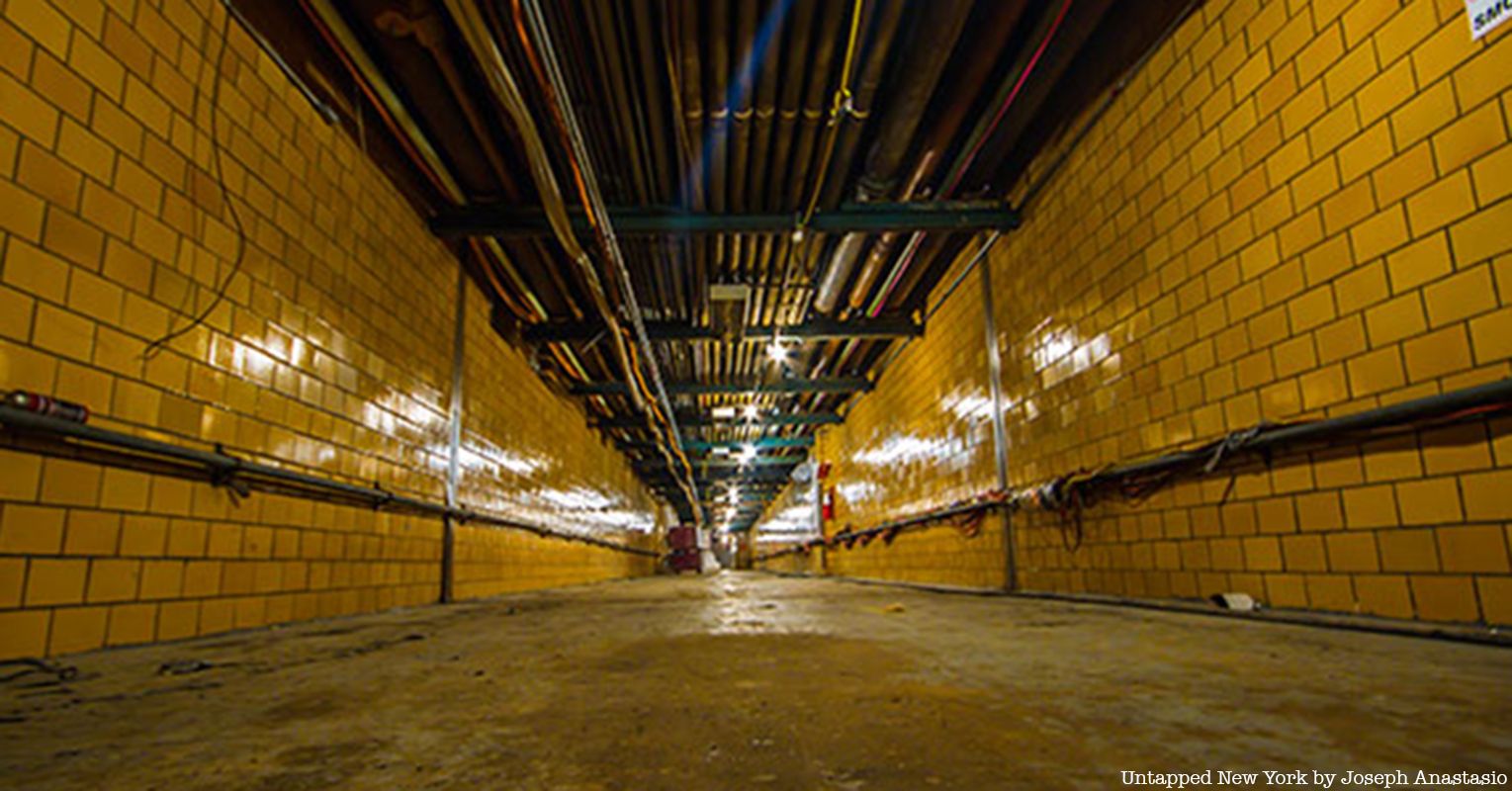
Tunnels under the former Goldwater Hospital
On Roosevelt Island, Goldwater Hospital opened in 1939 as a “monument to the golden years of public health in New York City.” The hospital was recently demolished in early 2014, and sat where Cornell Tech exists today. At the time of its de-commissioning, Goldwater housed a nursing home and a hospital specializing in respiratory and rehabilitative medicine. Many of the building’s patients were moved to Coler Hospital on Roosevelt Island’s North End prior to the hospital’s closing.
Dr. Sigismund Schulz Goldwater, who served as health commissioner under Mayor LaGuardia, wanted to shift health care’s emphasis towards studying chronic diseases, so he opened up the hospital to engage in more longitudinal research. In the hospital’s early years, Goldwater cared for polio patients and also ran a wheelchair repair shop. Columbia and NYU operated research units at the hospital, and the War Department also conducted secret research there on malaria and human temperature tolerance. The hospital’s architecture allowed for patients to have direct access to light and fresh air.
To preserve the building’s history, architect Charles Giraudet took over 18,000 photos of each room of the hospital as well as its demolition. You can see some of his photographs on his website.
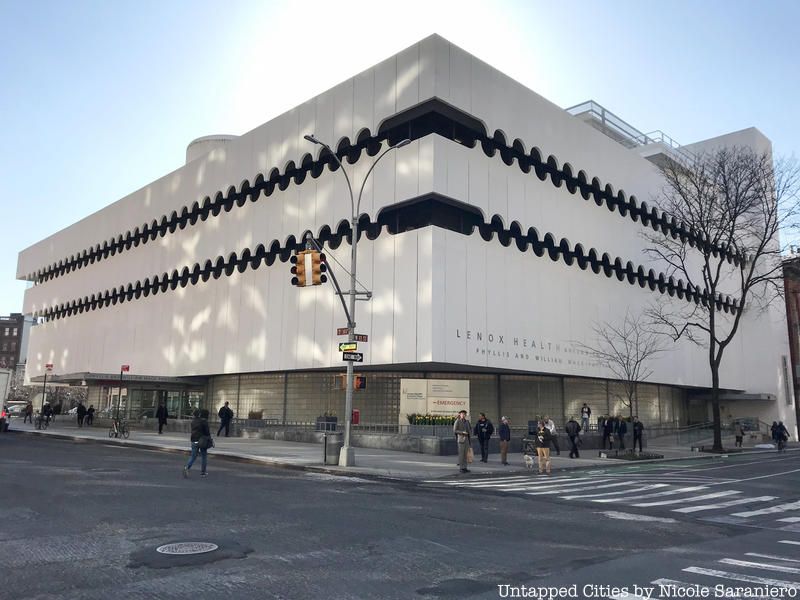
The Edward and Theresa O’Toole Medical Services Building of St. Vincent’s Hospital, not Lenox Health Greenwich Village
Saint Vincent Catholic Medical Center in Greenwich Village was a major teaching hospital that was founded in 1849 and served a wide range of New Yorkers until its closure on April 30, 2010. SVCMC placed significant emphasis on patient-focused healthcare centered around respect, integrity, compassion, and excellence. The hospital admitted patients regardless of their religion or ability to pay.
The hospital was originally opened by the Sisters of Charity as a thirty-bed hospital in a small brick house to serve the poor as one of New York’s only charity hospitals. SVCMC opened during New York’s cholera epidemic, and a typhoid epidemic in 1852 filled the hospital to capacity once again, prompting the Sisters to move locations to a former orphanage. The hospital introduced its first horse-drawn ambulance in 1870. According to a New York Times article, the poet Edna St. Vincent Millay got her middle name from the hospital, which saved her uncle’s life.
SVCMC responded to and treated patients of major events like the Triangle Shirtwaist Factory Fire, the sinking of the Titanic, the 1975 Fraunces Tavern bombing, and 9/11. The hospital established the first AIDS ward on the East Coast and the second one in the country. However, the hospital filed for bankruptcy in 2005, and leading up to its closing, the New York Department of Health announced that there would be no need for an acute care hospital like SVCMC in Greenwich Village.
After struggling for the decade to keep the hospital open, its emergency room closed in 2010. The building, which sat across from Edward and Theresa O’Toole Medical Services Building (above), was completely demolished in 2013, and a new luxury building called Greenwich Lane has since replaced the hospital.
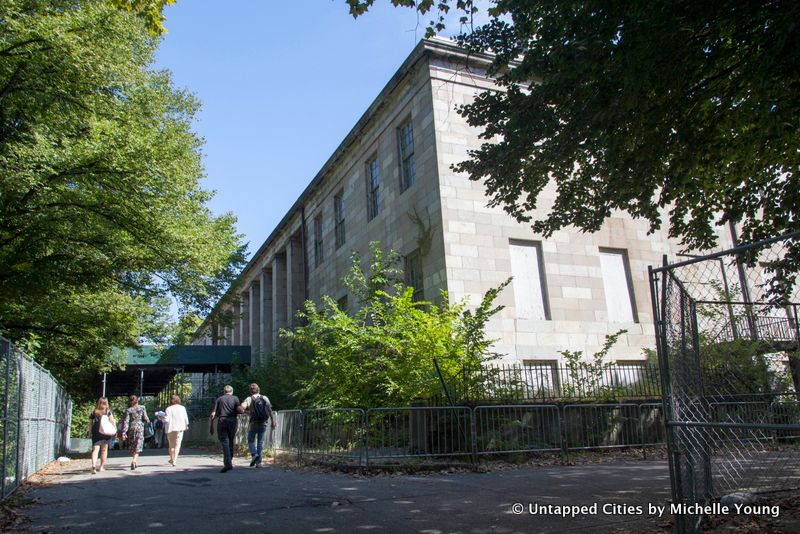
The Brooklyn Naval Hospital, one of the oldest naval hospitals in the United States, operated from 1838 to 1948 at the Brooklyn Navy Yard. Two of the hospital’s structures, including the Surgeon’s Residence, are designated New York City Landmarks.
In 1824, the Secretary of the Navy purchased a tract for the hospital since the first hospital at the Brooklyn Naval Yard was described as inadequate. In the 1850s, the hospital became the main hospital of the US Navy’s hospital system, treating sailors and dock workers with a capacity of 150 patients.
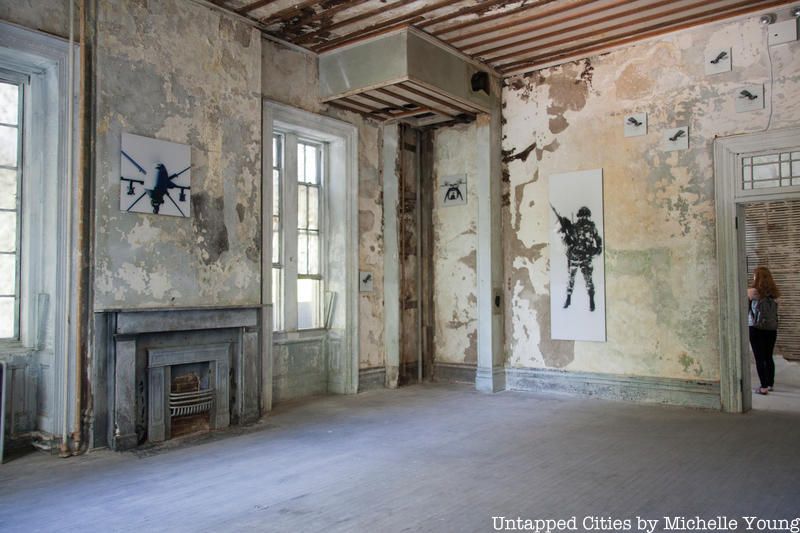
According to a Brooklyn Daily Eagle article, the Brooklyn Naval Hospital treated nearly a quarter of all Union casualties during the Civil War. By the early 1900s, the hospital was considered one of the best civilian hospitals in the United States thanks to its expansion. The hospital grew to accommodate patients with contagious diseases by 1913, and by World War I, the hospital could accommodate 3,000 patients at a time.
Following World War II, the Navy announced that it would be closing the Brooklyn Naval Hospital in 1948. Many of the hospital’s patients were transferred to St. Albans Naval Hospital in Queens, and the hospital was then converted into the US Naval Receiving Annex, Brooklyn.

Rooftop of Kings County Hospital in Brooklyn. Photo by: Francisco Roman/NBC from the show New Amsterdam.
The University Hospital of Brooklyn at Long Island College Hospital, founded as the Long Island College Hospital in 1858, was a 506-bed teaching hospital in Brooklyn that closed on August 30, 2014. The hospital pioneered major advancements in the medical field such as bedside teaching. It became one of the first hospitals in the United States to use anesthesia and stethoscopes, and in 1873, it introduced the first emergency ambulance service in Brooklyn. The Polhemus Memorial Clinic, built as part of the LICH, was considered by author Joseph Korom in his book The American Skyscraper as “the first example of a skyscraper hospital — anywhere.”
On May 27, 2011, the LICH became part of SUNY Downstate’s University Hospital of Brooklyn, but just two years later, the Trustees of the State University of New York voted to close the hospital. After many efforts by the hospital to remain office, the closure of the hospital was stalled numerous times in court. Nine proposals to buy the LICH site were submitted, resulting in many accusations against bidders. By 2014, Fortis Property Group purchased LICH from SUNY, and hundreds of workers and nurses were laid off.

Located about a half-mile north of Yankee Stadium, Morrisania Hospital opened on July 1, 1929 and closed exactly 47 years later, on June 30, 1976, a casualty of New York’s mid 1970s fiscal crisis. It was a 400-bed municipal facility designed by architect Charles B. Meyer & Associates in a distinctive Italian Renaissance style. Curiously, despite its name, it’s not located in the Morrisania neighborhood, which is located several blocks to the east.
It was vacant and decaying for over two decades after it shuttered in the fiscal crisis of the 1970s, but in 1997 it reopened with affordable housing, job training programs, and other community services. These include a health clinic in the former nurses residence wing. Renamed Urban Horizons, it is operated by the Women’s Housing and Economic Development Corporation (WHEDco).
According to the New York Times, the 400-bed hospital’s first patient was a 5-year-old boy named Michael O’Brien who was injured after falling on broken glass in the street. When New York City experienced a smallpox outbreak in April 1947, the Daily News reported about “the hundreds of New Yorkers who lined up at Morrisania Hospital” to receive free vaccinations, with the queue snaking around the block.

The Triboro Hospital for Tuberculosis in Jamaica, Queens, operated as a tuberculosis sanatorium and later a general hospital from 1941 until the early 2000s. The hospital, housed in what is now called the “T Building,” was converted into a general hospital in the 1970s and earlier merged with the adjacent Queens General Hospital in the 1950s. The new Queens Hospital Center opened in 2001, and the T Building has since been the location of administrative offices and storage by the Queens Hospital Center.
The eleven-story Art Moderne-style building was completed in 1941, six years after the opening of the QHS in 1935. Immediately after opening, tuberculosis patients from nearby hospitals were transferred to Triboro Hospital for treatment. Mayor LaGuardia noted during the cornerstone ceremony that the building should be considered “the Hospital of Mistakes of the Past” due to New York’s high prevalence of tuberculosis. Following the tuberculosis outbreaks, Triboro Hospital merged with Queens General and Queensboro Hospital into QHS. By the 1970s, however, many of Triboro’s facilities were outdated and in violation of modern health codes, and by the 1990s, four buildings on QHS’s campus were demolished once QHS decided to move.
A drug rehabilitation program called “It’s Never Too Late” opened in the Triboro Building, but since the early 2000s, the city sought to sell or redevelop the Triboro Building into housing communities. A project called Skyline Commons, a retirement community that would open in the building, was approved in 2007 but was cancelled in 2009 during the economic recession. The New York City Council approved plans in 2018 to renovate Triboro Hospital for affordable housing, and the hospital was added to the National Register of Historic Places in 2019.

Located in Rockaway, Queens, the Neponsit Beach Hospital is a former tuberculosis sanatorium adjacent to Jacob Riis Park that opened in 1915. The hospital closed in 1955 once the tuberculosis epidemic began to slow down, and it later operated as the Neponsit Health Care Center until 1998. The hospital was originally oriented towards children but expanded to treat military veterans.
The hospital consisted of three buildings, one of which was built as a Works Progress Administration project. The hospital also contained two sets of murals by American artists Louis Schanker and Helen West Heller.
Jacob Riis, a famous muckraker who photographed tenement houses in How the Other Half Lives, advocated for the creation of a children’s hospital in the Rockaways to treat growing tuberculosis cases. To raise money for the hospital, Riis’ Association for Improving the Condition of the Poor distributed pictures of a boy named “Smiling Joe” who had spinal tuberculosis, and John D. Rockefeller donated $125,000 to the project as a result. The hospital opened on April 16, 1915 and was expanded as part of the Works Progress Administration during the 1930s to serve more ill children. The hospital was temporarily closed on January 7, 1943 to conserve fuel during World War II and was reopened two years later, housing many war veterans.
The hospital began working as an annex of Triboro Hospital. Yet due to a declining need for tuberculosis centers, the hospital shut down on April 21, 1955. NYC Parks Commissioner Robert Moses wanted to use the hospital land to expand Jacob Riis Park, but the Board of Estimate blocked Moses’ plans for expansion. In 1961, the Neponsit Home for the Aged opened and operated for over three decades, yet the nursing home was evacuated in 1998 after building damage from the Labor Day storm. It has sat abandoned for more than two decades.

Seaview Hospital opened its doors in 1913. Like many tuberculosis hospitals in the 20th century, the grounds and buildings were designed with an “open air” concept in correlation with the popular belief that fresh air and sunlight were the best cures for infectious diseases. At one point in time, the hospital served as the largest tuberculosis sanitarium in the country. It is also the location where the cure for tuberculosis was discovered.
Today, the Seaview Hospital site is partially occupied, having been renovated and repurposed by NYC Health + Hospitals. It is also in line to be further renovated as a mixed-used, health and wellness-focused development.

North General Hospital was a private, not-for-profit teaching hospital in East Harlem that closed in 2010. Opened in 1979 to replace, as tenant, the Hospital for Joint Diseases, NGH had a significant impact on East Harlem’s economy, acting as the largest private employer in Harlem. It was the only minority-run, voluntary teaching hospital in all of New York state.
NGH opened as the Joint Diseases North General Hospital at its first East Harlem location, but the hospital moved in 1991 into a newly built facility two blocks south. Yet, by 2004, private hospitals in New York, including NGH, were behind by more than $100 million in payments to pension funds and employee benefits. By its closing, the hospital had a debt of around $293 million, closing four days after Saint Vincent’s Hospital. The hospital, a symbol of Harlem’s growth, closed with little warning, leaving many patients frazzled.
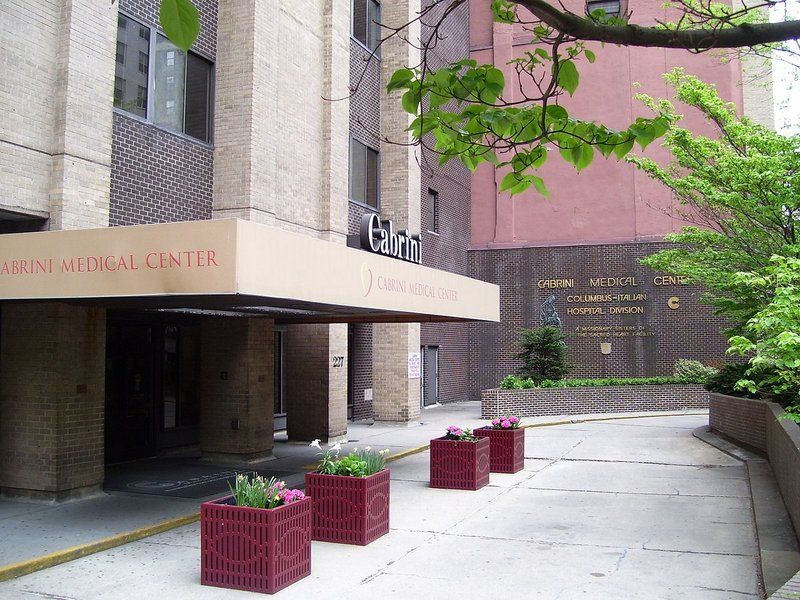
Cabrini Medical Center in Gramercy. Photo from Wikimedia Commons by Beyond My Ken.
The Cabrini Medical Center in Gramercy, Manhattan was created in 1973 through the merging of two Manhattan hospitals: Columbus Hospital and Italian Hospital. The hospital was closed in 2008 after filing for bankruptcy.
Founded in 1892, Columbus Hospital officially opened in 1896 by the Missionary Sisters of the Sacred Heart of Jesus, founded by the merger hospital’s namesake Mother Frances Xavier Cabrini. The hospital had a capacity of around 100 beds and was created to address the medical needs of Italian immigrants. The Italian Hospital was created four decades later in 1937 by the Italian Hospital Society, which served a similar purpose. The two hospitals merged in 1973 into a nearly 500-bed facility and became one of the first hospitals to expertly treat patients with AIDS. Famous figures like graffiti artist Jean-Michel Basquiat died at the hospital, while Andy Warhol was pronounced clinically dead from a gunshot wound at Cabrini but survived after resuscitation.
The Cabrini Medical Center closed permanently on March 16, 2008 after previously announcing that the Emergency Department would be closed. Memorial Sloan-Kettering Cancer Center purchased the medical center buildings for $83.1 million, but they were later converted into residences in 2013.

Bayley Seton Hospital, in Staten Island’s Stapleton neighborhood, began as the Marine Hospital Service in 1831. The hospital was turned over to Saint Vincent’s Medical Catholic Center in 2000, which filed for bankruptcy in 2003 and soon after closed.
The current Bayley Seton campus was constructed around the Marine Hospital Service buildings. The MHS provided medical assistance to naval personnel, and Staten Island’s first hospital, the Seaman’s Retreat, was opened here. In what was known as the Staten Island Quarantine War, mobs burned down the nearby New York Marine Hospital in 1858, which led to increased need for medical centers with advanced technology to study diseases. On the top floor of the Marine Hospital, a man named Dr. Joseph J. Kinyoun established a laboratory to study bacteria, and after this laboratory moved to Washington D.C. with the help of Congress, it became the National Institutes of Health.
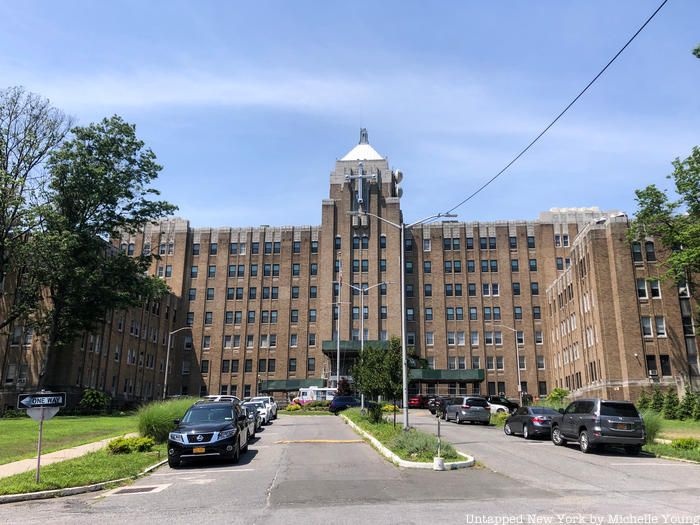
The main building of Bayley Seton was constructed during the 1930s in the Mayan Revival style and treated many veterans and military due to the large number of military, naval, and Coast Guard installations nearby. At the time, the hospital was known as the Staten Island Public Health Service Hospital, located right where the original Marine Hospital Service buildings were.
The hospital was sold to the Sisters of Charity in 1980, who renamed the hospital Bayley Seton after Elizabeth Ann Seton, a saint from New York, and her father Richard Bayley, the first chief health officer of New York City. Bayley Seton Hospital continued to expand in the 1980s and 1990s, including the opening of a woman’s drug abuse treatment center called Amethyst House.
In 2000, the Sisters of Charity turned the building over to Saint Vincent’s Hospital, but within just a few years, Bayley Seton lost many of its services including its emergency room and pharmacy. The Richmond University Medical Center noted that its HIV/AIDS center and adult and pediatric clinics at Bayley Seton would close. A deal was struck that the Salvation Army would purchase Bayley Seton and demolish the main hospital to create a recreation center.
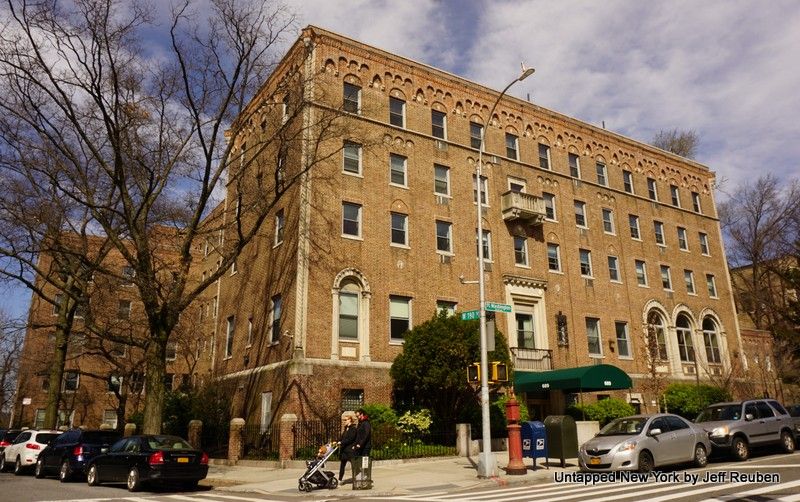
The Hospital of St. Elizabeth of Hungary moved into a new building at Fort Washington Avenue and W. 190th Street in 1928. It was a six-story general hospital with 110 beds designed by architect James F. Delany in a Romanesque style likely inspired by the original Cloisters museum, then located across the street. Operated by Franciscan nuns for most of its history, St. Elizabeth’s closed in 1981. It was sold at auction in 1983 and converted into a co-op apartment house in 1985.
Next, check out NYC’s former quarantine hospitals and islands.
Subscribe to our newsletter